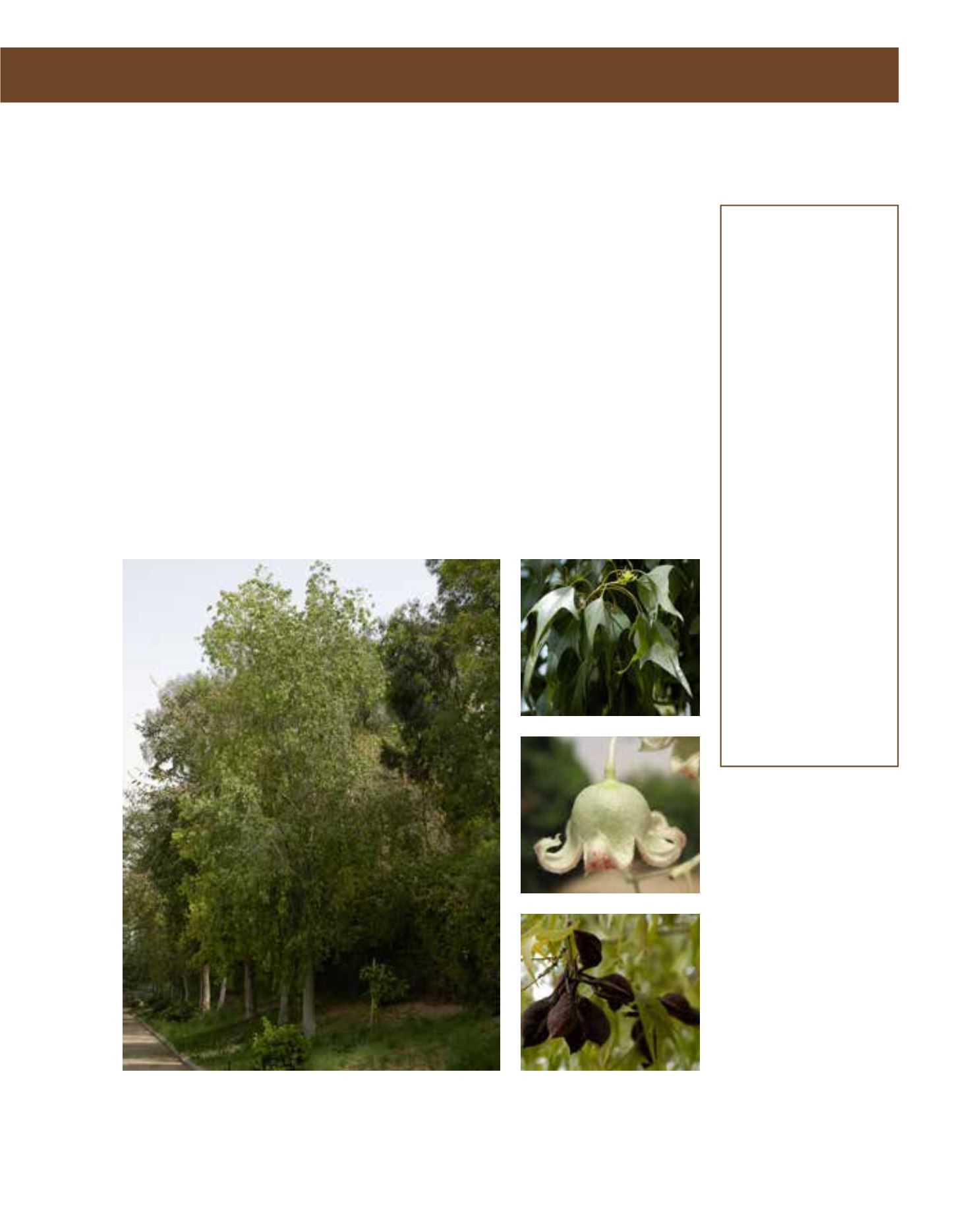

GENERAL
Origin
:
sub-Mediterranean,
Mediterranean,
sub-tropical,
tropical
Vigour
:
fairly fast
growing
Humidity
:
very arid, semi-
arid, semi-humid,
very humid
Propagation :
sowing and
pricking out
Maintenance :
moderate
CONDITIONS
Urban climate :
resistant
Dessication :
vulnerable
Stagnant water :
vulnerable
Irrigation
:
medium
Salinity/ppm :
high (4500 ppm)
Hardiness
:
-6°C
SHAPE
Type
:
tree
Height
:
10 m-20 m
Spread
:
8 m-15 m
Foliage
:
evergreen
FLOWER
Colour
:
light yellow, light
red
Size
:
1 cm - 2 cm
Period
:
April - May
FRUIT
Type of fruit :
capsule
Fruit size
:
7 cm - 8 cm
This Brachychiton is more drought-resistant than B. acerifolius. It tolerates full sun and a hot
desert climate, just like in its native country, the semi-arid inland of eastern Australia. Trees are
found growing there amongst rocks of granite or limestone, but also thriving in deep soil. Nar-
row and pyramidal when young, the plant’s name refers to the widened base of the trunk which
is an adaptation for storing water during prolonged periods without rainfall. On the other hand,
it responds well to irrigation by growing faster. It may reach 10 metres easily, while 20 metres are
to be expected only in its native environment. Known in Arabic as boudret al afreet, it is often
seen in Arriyadh, where the shiny, bright-green fluttering leaves provide a lush effect. The green
bark is smooth and attractive. They allow distinguishing two subspecies; Brachychiton populneus
ssp. populneus has reduced lateral lobes, while three or five lobes create the palmate leaf of ssp.
trilobus. Both subspecies have flowers in light yellow with purple centre appearing in spring. Cul-
tivars may also flower in pink or red. Stagnant water is one factor to avoid definitely, hence soil
should drain well. This tree blends in well in desert landscapes, creating dense shade. Not many
trees do as well in lawn areas as the Bottle Tree. The root zone should be soaked thoroughly every
couple of months in summer. It survives in an urban microclimate, but the littering fruit and
annoying itchy hairs limit it to area where the dry pods do not affect passers-by.
72
Brachychiton populneus,
Sterculiaceae
Bottle Tree,
boudret al afreet
















